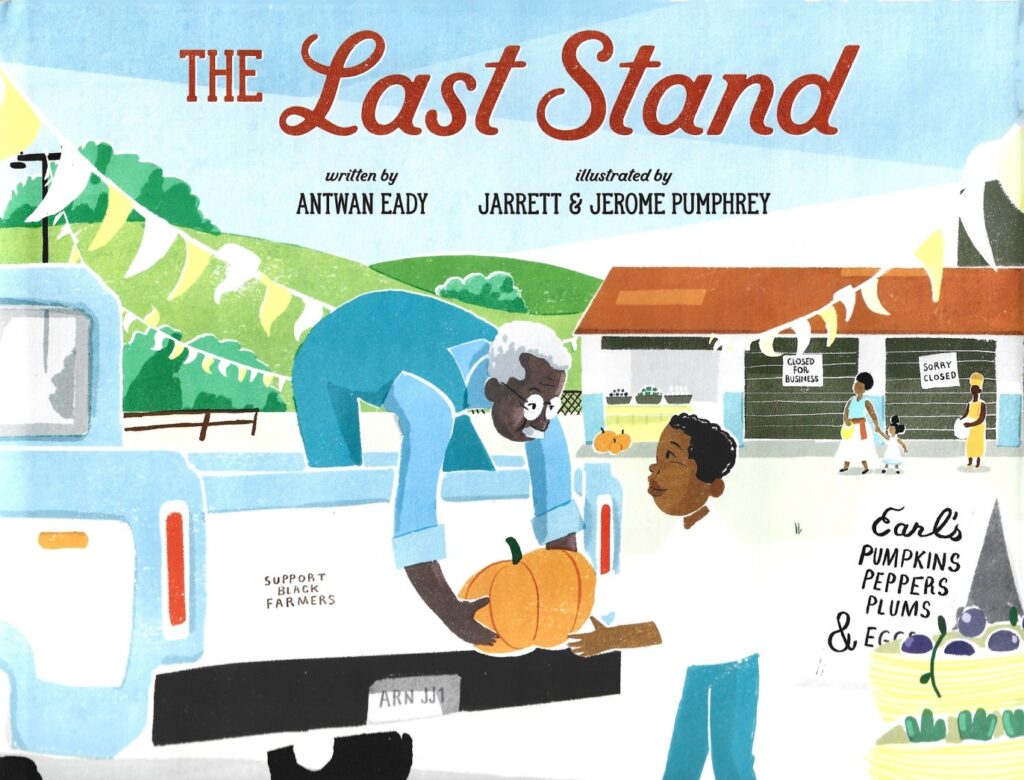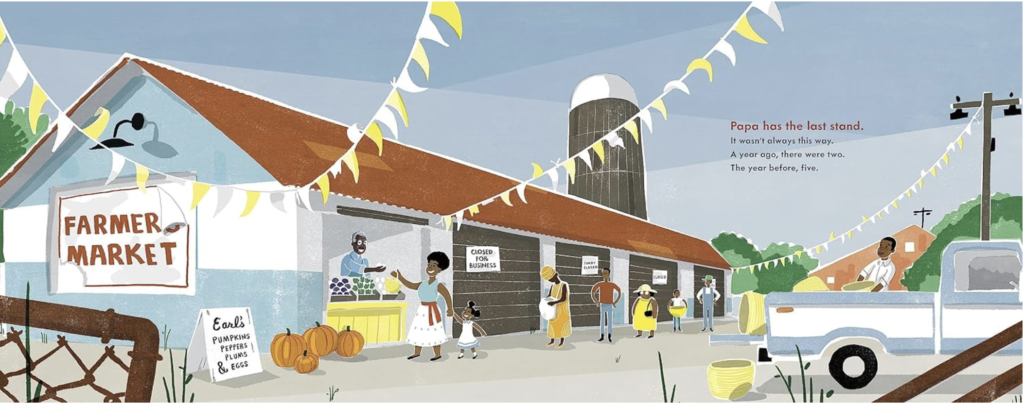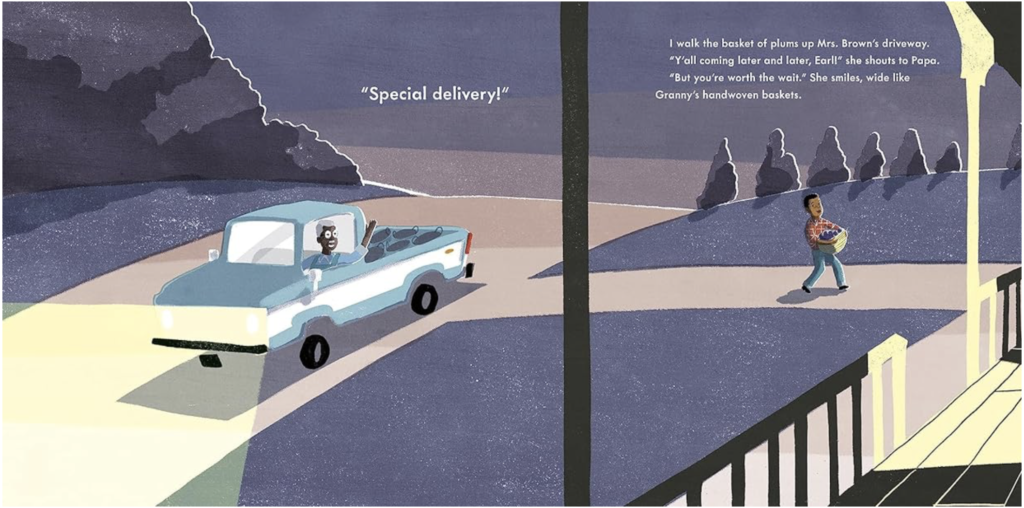
Knopf Books for Young Readers | 978-0593480571
Papa has the last stand at the farmer’s market, but the job is hard, and he’s getting older. From week to week, he and his grandson work together to bring in the crops. While Papa gathers peppers, plums, and pumpkins, his grandson collects the eggs. Together they set their goods “in baskets Granny made from sweetgrass.” When the blue pickup truck is full, they’re off to the farmer’s market to sell their harvest.

Two years ago, there were five stands. Last year, only two. Now, only Earl’s remains. “Ms. Rosa sorts out her usual. Bright orange pumpkins and fresh white eggs.” Papa has held back some of the ripe green peppers for Mr. Johnny. By the end of the day, when all the produce has been sold, there is one last special delivery – a basket of plums for Mrs. Brown, saved in one of Granny’s handwoven baskets.

The hard work takes its toll and Papa shows his age. When Saturday arrives again, Papa is too tired to gather the harvest. “Three feet of Papa’s rope, a few of Granny’s sweetgrass baskets” and the grandson has an idea to keep the stand open and available, at least for a while.
With memorable and moving words by Antwan Eady and stunning artwork by brothers Jarrett Pumphrey and Jerome Pumphrey, THE LAST STAND is both a celebration of the many ways in which a community continues to support one another through changing times and circumstances, as well as social commentary on the disappearance of black-owned farms in this country. This is a book you’ll definitely want to add to your home, school, or library shelf.
**
Enjoy this short video that shows how the the Pumphrey brothers create their illustrations:
To learn more about the history of Black farmers, read this excerpt from a blog post by Feeding America, titled, “A Brief History Of America’s Black Farmers From The Past To Present”:
“Today, just 1% of farmers in the United States identify as Black according to the United States Department of Agriculture (USDA). These numbers are down from 1 million Black farmers a century ago. In 1919, Black farmland ownership peaked at 16 to 19 million acres, about 14% of total agricultural land. A century later, 90% of that land has been lost. Even though farmers of color now account for only 2% of the agricultural land, Black farmers are drawing strength from their long history of agricultural production as a strategy to address food insecurity and improve the health of local communities.”
Check out this earlier ReaderKidZ post about Eady’s beautiful debut, NIGEL and the MOON.










